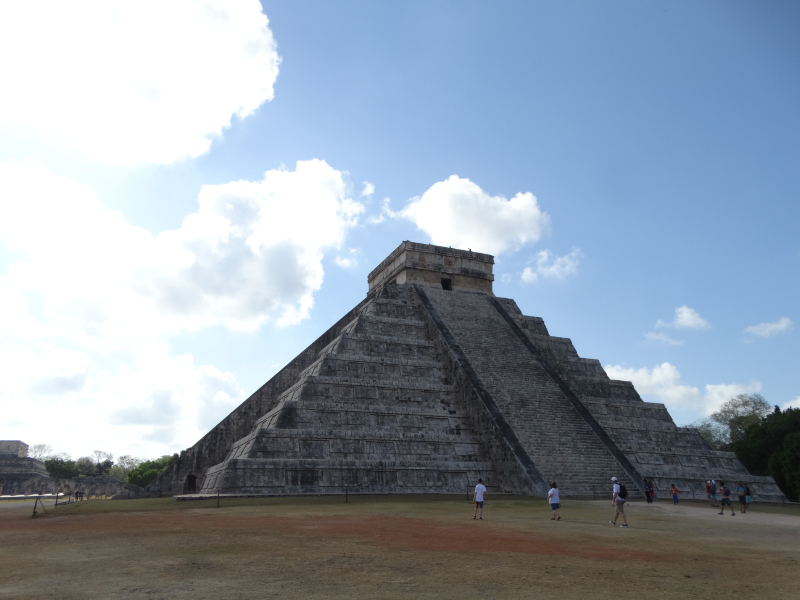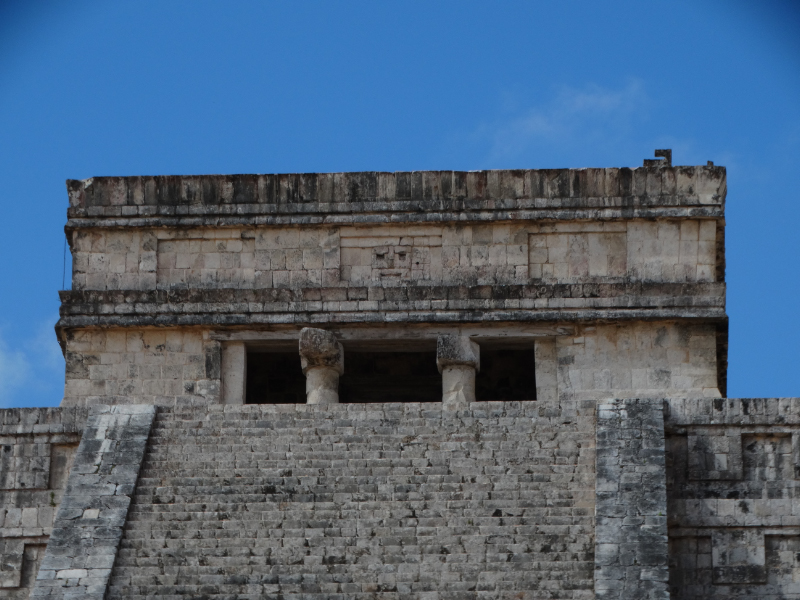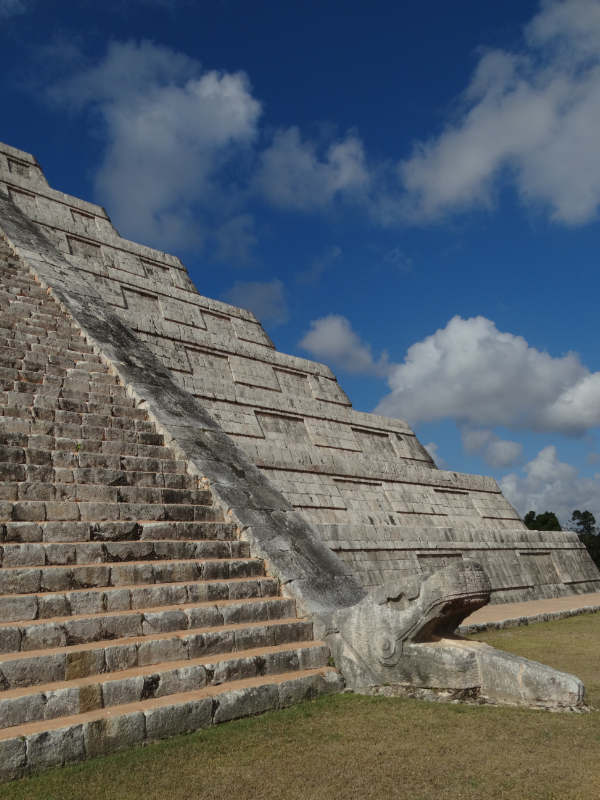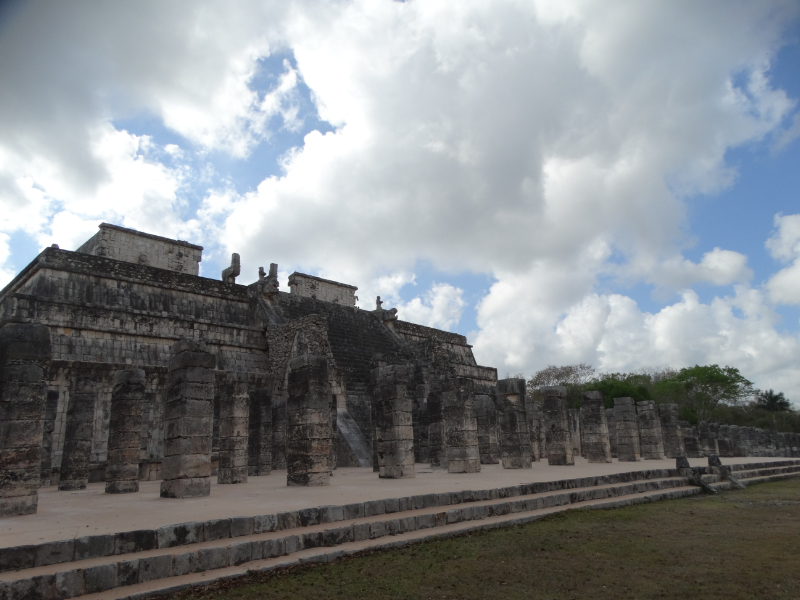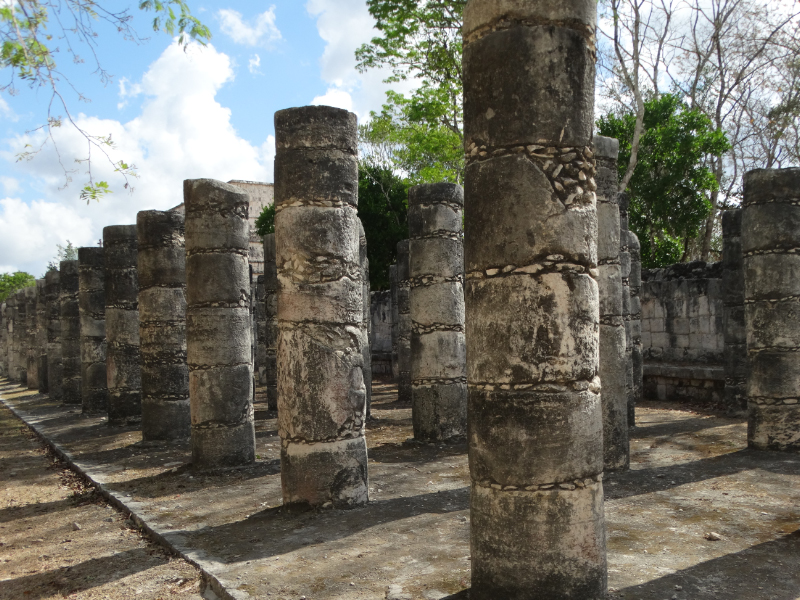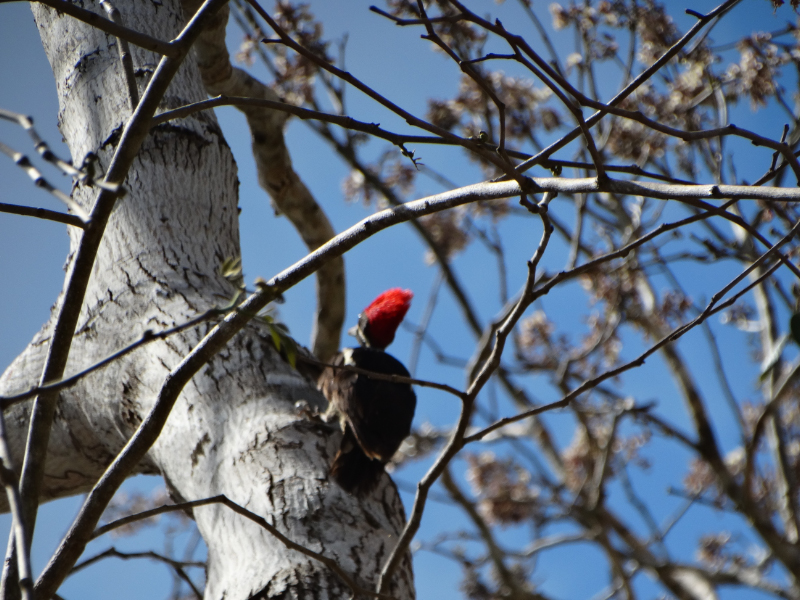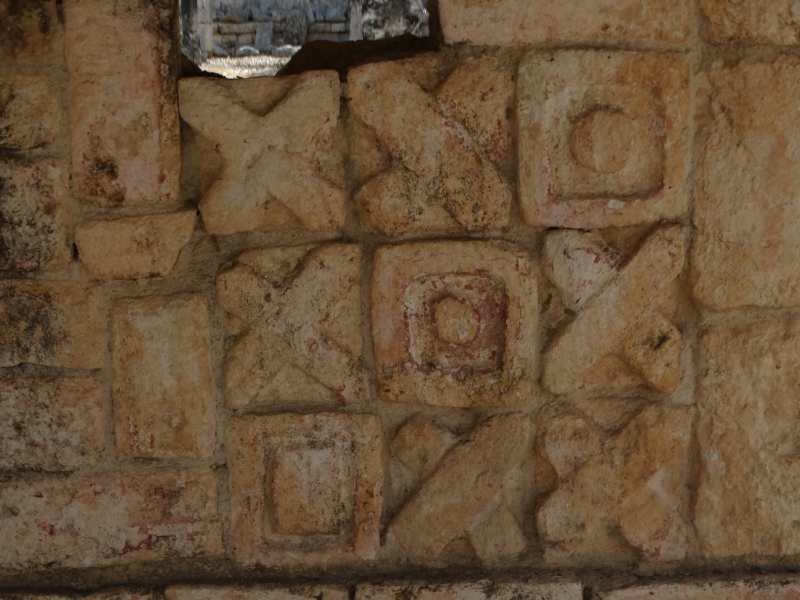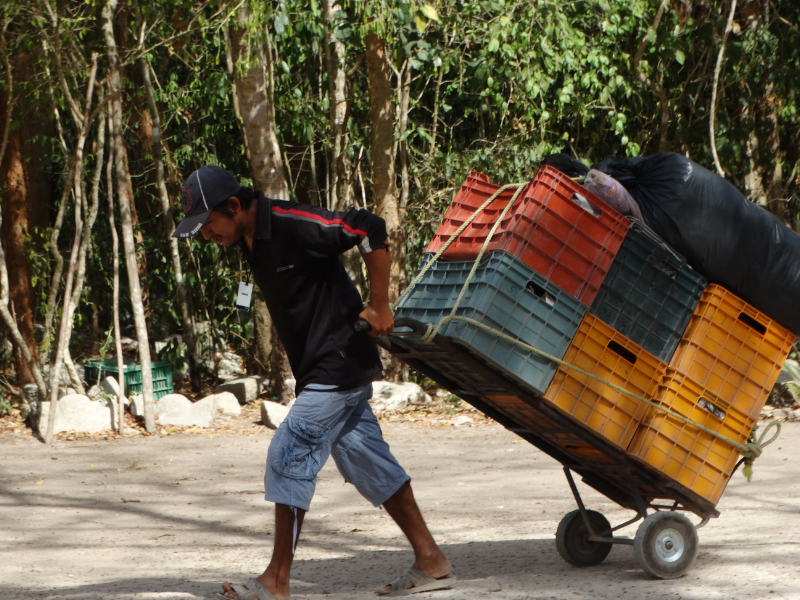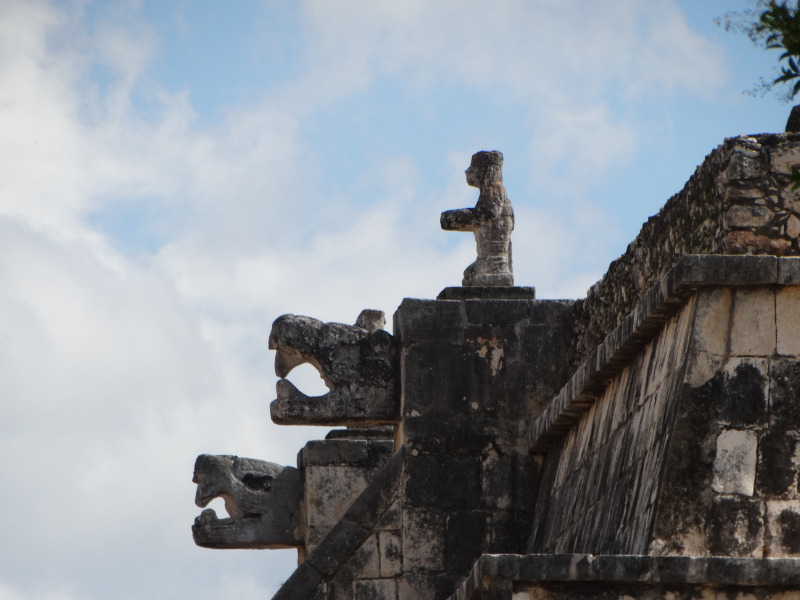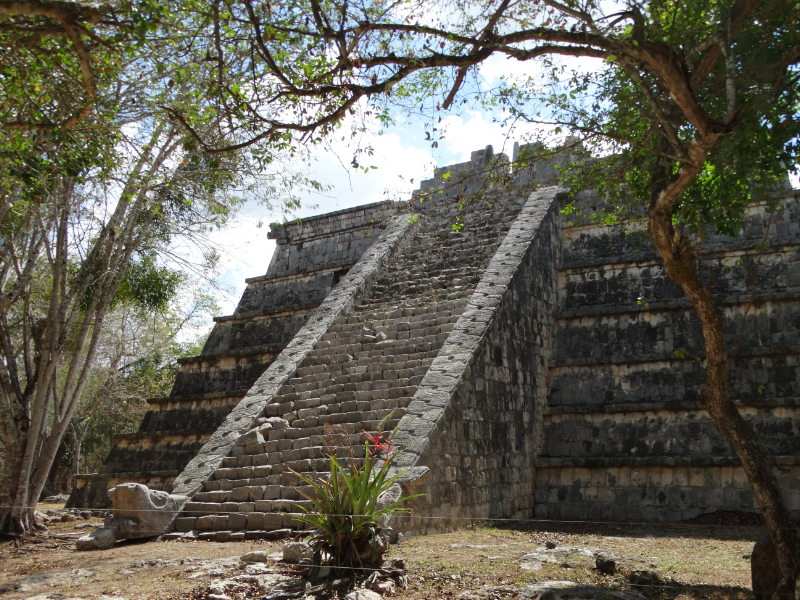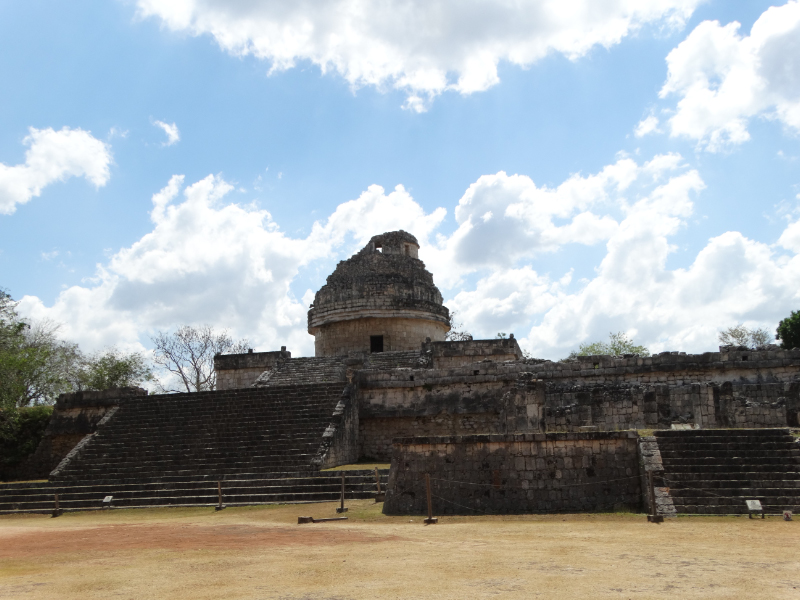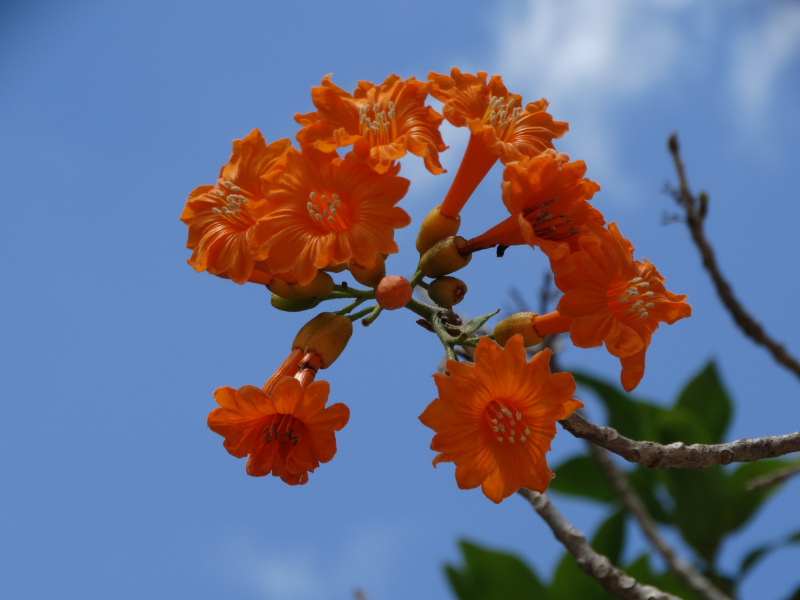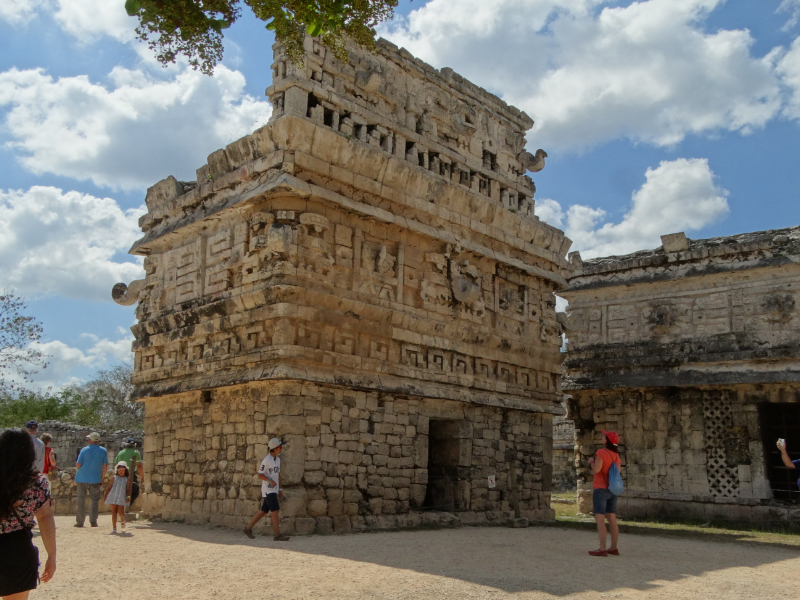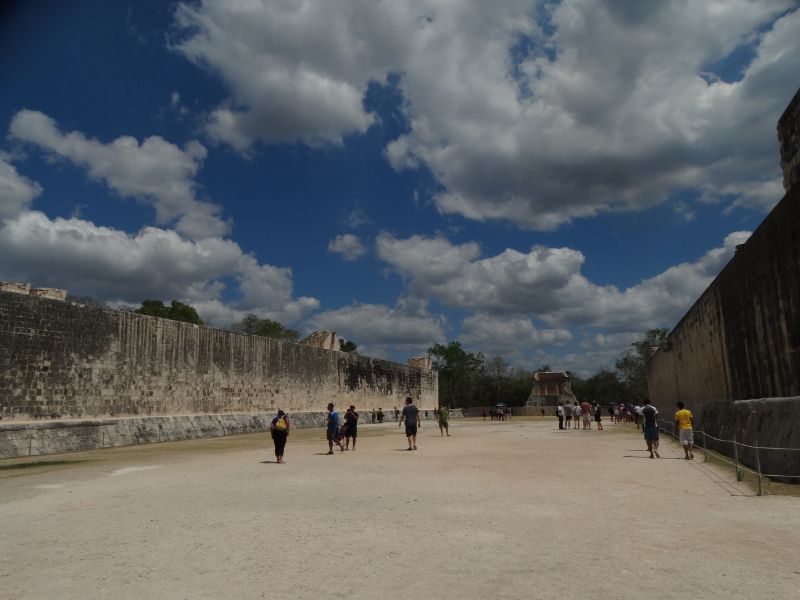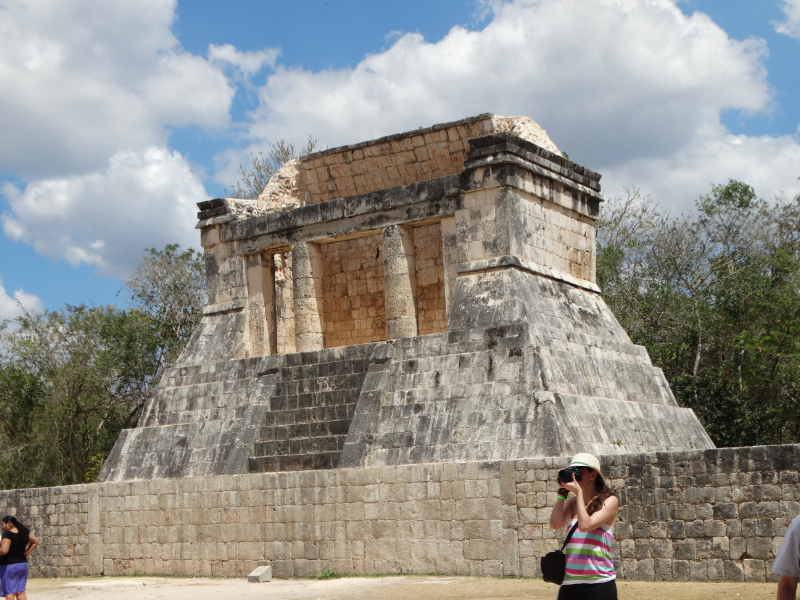Thursday 2 to Sunday 5 April
Taking advantage of our hire car, we drove from Tulum to Pisté, the village nearest Chichen Itza, one of Mexico’s most famous pyramid sites.
Cobá was part way along the road, so we took a break there to see another Mayan site, now within a jungle.
We spent a rest day in Pisté in the lovely gardens. A chance to catch up with some paper work.
We were up early and out to Chichen Itza before opening time. There was a queue for visitors to get into the car park and an even longer queue for traders to get into the grounds via a separate gate. As we were leaving three hours later, traders were still setting up their stalls along the tree lined paths that joined the various parts of the complex.
Of course the highlight of Chichen Itza is El Castillo. You can’t climb this one, but it is a magnificent, awe inspiring pyramid. Current thinking is that these pyramids don’t hold graves as they do in Egypt. They are layers and layers of temples, one built over the other by subsequent generations.
At Chichen Itza there is also the largest ball game court. Imagine the Quidditch game in Harry Potter, where an animal had to be passed through a hoop on a side wall. The ball game had a similar court but the players were land bound. The ball was a large solid rubber ball. They played the ball a little like soccer with feet and body. The game was sometimes ceremonial and sacrificial with the loosing captain loosing his head. Totally gruesome!
Mayans had devised a complex set of calendars. The Haab calendar recognised 365 days in the year made up of eighteen 20 day months and a month of five ‘bad’ days. The Long Count calendar of 7,000 days (approximately 20 years) represented a cycle of good and bad times. The Tzolkin or divine calendar was 260 days long and was used for religious and ceremonial events.
The population was divided into three groups – the regal and priests were the rulers. Educated, they lived within the city walls in palaces surrounded by temples. The artisans and craft people formed the second group. They were protected by their craft. The majority belonged to the lowest class and were little more than slaves. They worked the land.
Somewhere along the way we sighted our first woodpecker. Well actually, we heard him first, then looked up to see his amazing red crest, as he pecked away at a dead tree. Cartoons do come true!
There were many amazing structures at Chichen Itza – the pictures tell the story.
e_header.jpg)

